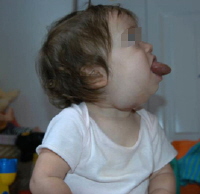December 22nd, 2009 by Nicholas Genes, M.D., Ph.D. in Better Health Network, News
No Comments »

Today the NY Times printed a piece that pokes fun at, and highlights the dangers of, the new habit of texting-while-walking:
This summer, the American College of Emergency Room Physicians released a statement expressing concern about the issue, citing a Chicago doctor who was seeing a lot of face, chin, eye and mouth injuries among young people who reported texting and tumbling.
Hmm… I’m a member of ACEP, but I’ve never heard of ACERP. Is it some rival organization of emergency physicians whose practice is confined to four walls? Or, in its rush to condemn new technologies that enable communication on-the-go, has the New York Times abandoned the traditional practices of editing and fact-checking? 
*This blog post was originally published at Blogborygmi*
December 17th, 2009 by RamonaBatesMD in Better Health Network, Research
No Comments »


Photo Credit: eMedicine.com
I stumbled across this article while previewing JAMA & Archives CME articles (full reference below). The article gives an overview of lymphatic malformations, noting that both sexes are equally affected, and there is no predilection for any race.
Lymphatic malformations are vascular malformations with an unknown cause. They are estimated to make up 6% of all benign soft-tissue tumors in children. While they may be rare, 50% of all lymphatic malformations are already obvious at the time of birth. Most (90%) are diagnosed by the end of the second year of life owing to clinical symptoms.
About 60% of all lymphatic malformations are found in the head and neck region. Regarding the mouth, the tongue is most commonly affected.
Read more »
*This blog post was originally published at Suture for a Living*
December 10th, 2009 by RamonaBatesMD in Better Health Network, Research
1 Comment »


Flipping through my current copy of The Journal of the Arkansas Medical Society, I was surprised to see this case report (full reference below) of a 30.8 pound cystosarcoma phyllodes of the breast. The accompanying photos are impressive. Many questions filled my head – Why did the woman wait so long to seek care? How did she manage to physically do her daily chores on the farm? How did she manage to find clothing to wear?
I scanned this photo in from the article. The patient’s history is as follows: Read more »
*This blog post was originally published at Suture for a Living*
November 26th, 2009 by RamonaBatesMD in Better Health Network, Health Tips
No Comments »

I was supplied these photos by someone who found my blog and then corresponded with me regarding their injury. He had injured his fingers in a motorcycle accident six weeks previous to our “meeting.” He understood that I could not be his treating physician and keep his questions respectful of that. I am grateful to him for the use of his photos as they show how healing occurs.
 Read more »
Read more »
*This blog post was originally published at Suture for a Living*
November 19th, 2009 by RamonaBatesMD in Better Health Network, Research
1 Comment »

 This article by Dr. Daniel Man (full reference below) is well worth the time spent reading it. Telltale signs of facelift procedures can include tightening across the lower face, visible scars, a distorted hairline, and the “pixie ear” deformity. Dr. Man looks at the causes of the ear deformity and ways to prevent it. (photo credit)
This article by Dr. Daniel Man (full reference below) is well worth the time spent reading it. Telltale signs of facelift procedures can include tightening across the lower face, visible scars, a distorted hairline, and the “pixie ear” deformity. Dr. Man looks at the causes of the ear deformity and ways to prevent it. (photo credit)
Dr. Man has provided a pdf file of the article on his website, so you don’t have access to the Aesthetic Surgery Journal to read the article.
Between January 2005 and November 2007, the author performed facelifts on 106 patients using a technique that included autologous fat injections to improve facial volume, hidden incisions in and around the ear, and absorbable bidirectional barbed sutures. Patient charts and photographs were reviewed retrospectively. Read more »
*This blog post was originally published at Suture for a Living*







 This article by
This article by 







